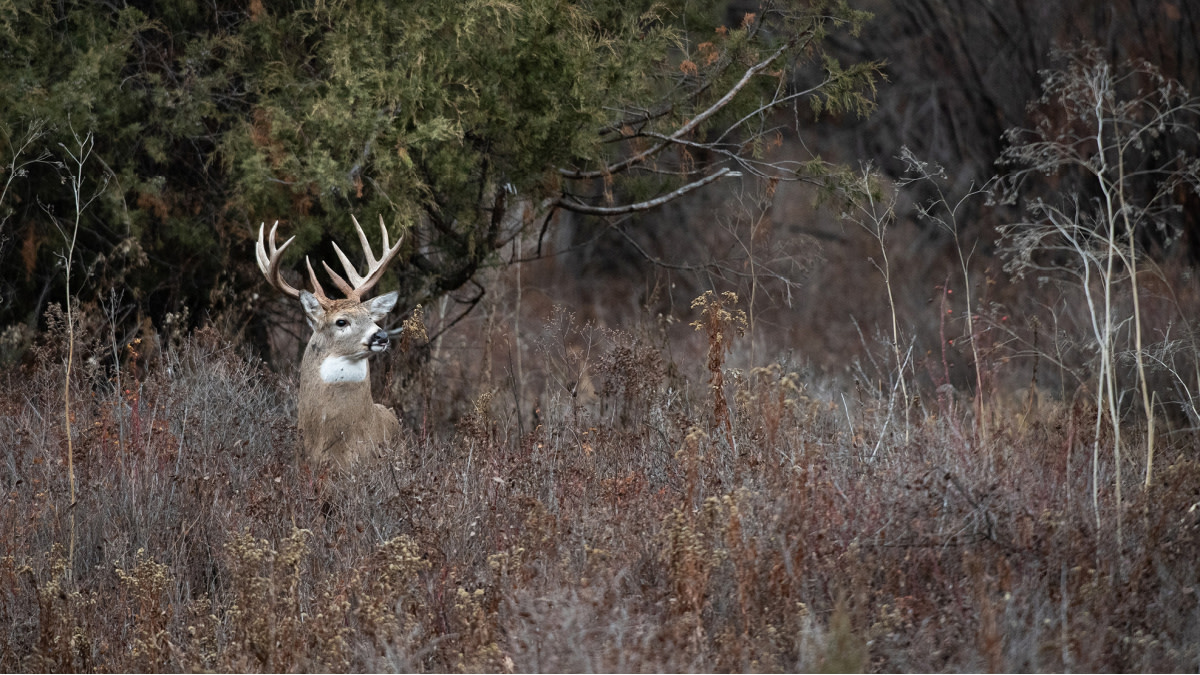
October is the most interesting month of the whitetail season. Just hear me out.
It’s like the slow ride up the first big hill of a rollercoaster, every passing day akin to a click on the tracks, building towards the much-awaited rush of the rut. The suspense of October alone is enough to make it a winner. But there’s more.
October also presents the most diverse conditions of any month during the season, with shifts in weather, food, hunting pressure, and physiology all leading to three distinct phases of deer behavior that savvy hunters must adapt to and take advantage of. Here’s how to do just that.
Early October
The first few days of this month represent a unique opportunity for those with October 1 opening days. At this point in the season many bucks are still on relatively consistent bed-to-feed patterns and, if there hasn’t been any hunting yet, you can expect some of that activity to happen in daylight. This can change after just a few days of hunting though, so the key is to have a plan in place for an early strike.
Through trail cams or long-distance observation, try to identify the most attractive food source at the moment and exactly how bucks are accessing it, all while not letting deer know of your presence. Then, if conditions allow, set up on opening night just inside the cover from that top food source and within shooting range of the most likely access points. This kind of opening day, food-based set-up can present one of the best opportunities of the whole year.
After the first day or two of the month, if hunting pressure is heavy, daylight buck activity near food sources might dwindle. But a timely drop in temperatures, something in the realm of 10 degrees or more from previous highs, can change that in a hurry.
“I’m a firm believer in cold fronts during early to mid-October,” said Justin Zarr of Bowhunt or Die. “If we can get a cold front I’ll sneak out for an afternoon and try to capitalize on those fronts.” You should consider doing the same.
Mid-October
Many hunters have been led to believe that deer move less frequently during the middle of October, but multiple studies have shown that deer movement actually increases throughout the month. It’s hard to deny that many deer hunters see fewer deer during this period, known as “The October Lull,” but I’d argue it’s less about a lull in activity and more about a shift in deer behavior that many hunters simply don’t adjust to.
In mid-October deer are shifting their travel patterns to account for increased hunting pressure, changing food sources, and falling leaf cover. All of that typically sends deer, especially mature bucks, into areas that make them much less visible during daylight for the average hunter.
“You do get less movement in daylight during this timeframe,” said DIY bowhunter Dan Infalt. “But I don’t see a lull because I’m pushing into those bedding areas. I’m definitely seeing them closer to the edge of darkness and a lot of the good bucks I’m seeing during that timeframe are only getting 75 to 100 yards from those beds.”
Infalt’s mid-October plan for hunting tight to bedding areas seems to be the key to getting in on mature bucks during this time of the year, but it requires a high level of experience and understanding of the area to pull it off. Push in towards bedding blindly and you’ll likely educate deer and blow your chances at future opportunities when deer are more apt to be moving. But if you know your spots and are confident in your ability to get close to buck bedrooms without blowing them out, get after it.
On the flip side, if you’re newer to hunting or to an area, this might in fact be a time to follow the traditional “October Lull” advice and play it safe until the later part of the month. Target does on field edges, hunt observation stands, or leave your best properties alone entirely and explore some new public lands instead. Things will only go up from here.
Late October
If October is the first hill of a rollercoaster, the last week of the month is the tippy-top, fully gripped, breathless peak of that climb. Testosterone is rising fast, bucks are getting aggressive, and every deer in the herd knows that the rut could explode at any moment.
All of this means that deer, and bucks especially, are going to be increasing their activity and will be more likely to make mistakes. What makes this a particularly great opportunity is that while bucks are getting more active, they’re doing so while sticking mostly to their home ranges and patterns—something that can’t be said of the chaos to come in November.
If you’ve scouted throughout the month and have a decent idea of how local bucks are using the area, now’s likely your best chance since opening day to intercept one of them moving in the daylight. Bucks are still going from bedding to feeding, but they’re lingering in between the two areas for longer periods of time in an effort to find a doe that might be ready to breed early. These transition zones can be great starting points when trying to determine where to sit in late October.
Feature image via Matt Hansen.





